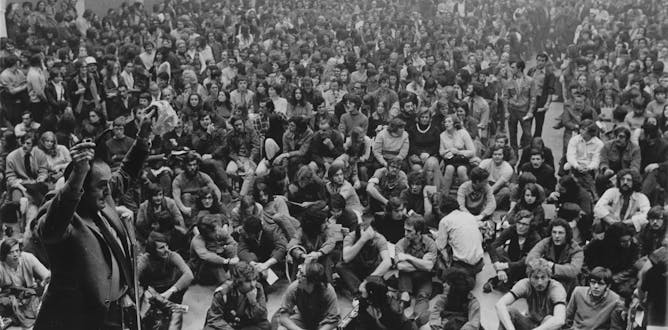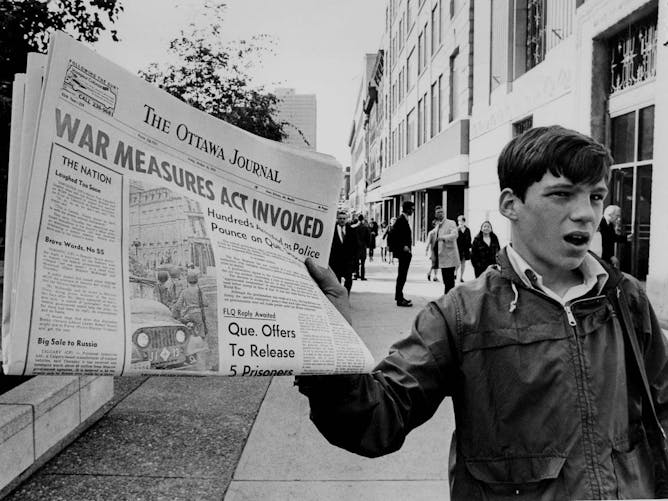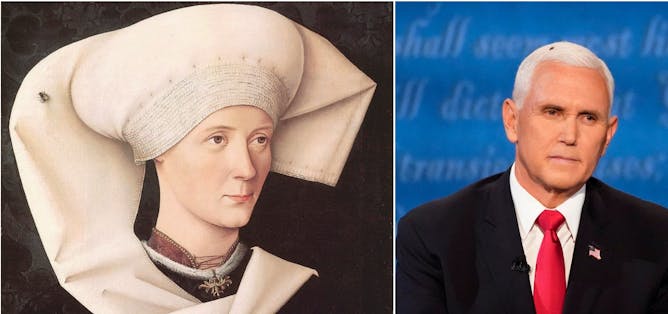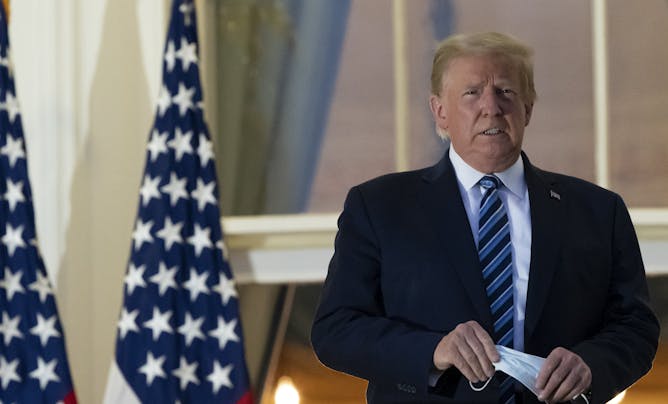|
Way back in the early days of the COVID-19 pandemic, a group of doctors was looking for a way to keep high-risk dialysis patients safer, so they started investigating whether cloth masks could help reduce virus transmission. They read every single study they could find on the topic — 25 of them! — and summarized what they found.
Today in The Conversation Canada, Catherine Clase of McMaster University in Hamilton, Ont., Juan Jesus Carrero of Sweden’s Karolinska Institute and Edouard Fu of Leiden University in The Netherlands answer some of the most common questions about face masks. Such as how they can possibly work when viruses are tiny and cloth has visible spaces between the threads. And whether they protect the wearer. And if some fabrics work better than others. And how many people need to wear them to really make a difference.
If you’ve got mask questions, we've got answers.
Also in today’s edition:
And in case you missed it — and you’re still thinking about that fly on Mike Pence’s head during the U.S. vice presidential debate last week:
|

Although cloth masks have been widely adopted, many people still have questions about them.
(Usplash/Vera Davidova)
Catherine Clase, McMaster University; Edouard Fu, Leiden University; Juan Jesus Carrero, Karolinska Institute
Epidemiologists reviewed 25 studies of cloth face masks. Here’s what they found out about how well they work, why they work, who they protect and why the mosquito and chain-link fence analogy is wrong.
|

Close to 3,000 Quebecers gathered at the Paul-Sauvé arena hours before the invocation of the War Measures Act would send Canadian troops onto the streets of the province and many people – some of them at the arena rally – were arrested in subsequent raids.
Éditions du Septentrion, CC BY-NC-ND
Éric Bédard, Université TÉLUQ
A new book argues that the War Measures Act was a response to the threat young people posed to authorities.
|

A newsboy holds up a newspaper with a banner headline reporting the invoking of the War Measures Act on Oct. 16, 1970, following the kidnapping of British diplomat James Cross and Québec Labour Minister Pierre Laporte by the FLQ.
THE CANADIAN PRESS/Peter Bregg
Jean-Philippe Warren, Concordia University
After the FLQ manifesto was broadcast in October 1970, Québecers felt uplifted. It expressed many of their concerns. That changed after Pierre Laporte was found dead in the trunk of a car.
|

Many workplaces have dramatically changed during the COVID-19 pandemic. Performance assessments and compensation should reflect the new way of working.
Vlada Karpovich/Pexels
Erica Pimentel, Concordia University
Existing employee assessment and compensation structures are not suited to the reality of remote work. It's time to change that.
|

‘Portrait of a Woman of the Hofer Family,’ Swabian artist, c. 1470, and a picture showing a fly on U.S. Vice-President Mike Pence during the Oct. 7 debate at University of Utah in Salt Lake City.
(Wikimedia Commons/AP Photo/Julio Cortez)
Sally Hickson, University of Guelph
Flies have long held symbolic meaning in the history of art. In portraits made in Renaissance Europe, the presence of a fly symbolizes the transience of human life.
|

Donald Trump tient son masque alors qu'il se tient sur le balcon de la salle bleue à son retour à la Maison-Blanche, le lundi 5 octobre 2020, à Washington, après avoir quitté le centre médical militaire national Walter Reed. Trump a annoncé qu'il avait été testé positif au COVID-19 le 2 octobre.
AP Photo/Alex Brandon
Charles-Philippe David, Université du Québec à Montréal (UQAM)
La crise actuelle montre bien l’insuffisance de la méthode décisionnelle de Trump basée sur l’improvisation et l’imprévisibilité.
|
Arts
|
-
Peter Lehman, Arizona State University
Directors and audiences are becoming more comfortable with male frontal nudity. But what message does it send when almost all of the penises shown aren't real?
|
|
Education
|
-
Roxanne Hughes, FAMU-FSU College of Engineering
A strong identity as a scientist is crucial for girls to succeed in STEM fields such as computer science. Are educators recognizing and rewarding the right behaviors?
|
|
Environment + Energy
|
-
Paul Braterman, University of Glasgow
John MacArthur's long-held view that climate change is fiction is just part of a wider Christian movement coalescing around this important election issue.
|
|